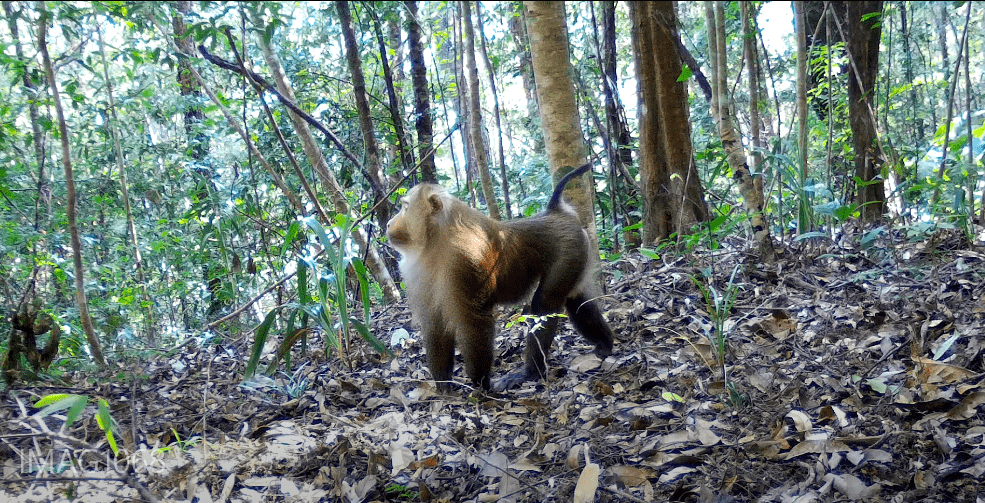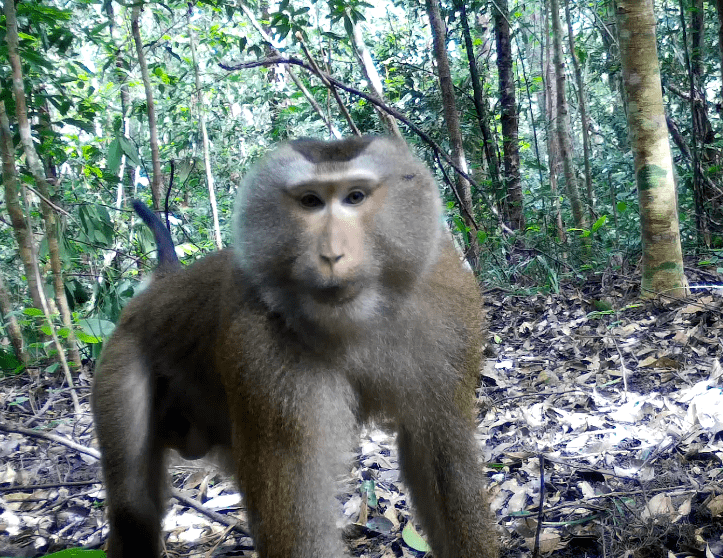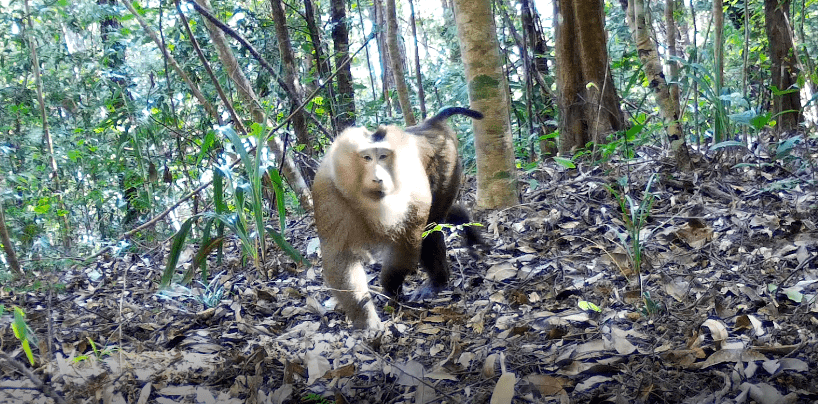Nature reserve in Pu'er steps up protection of rare monkey

Northern pig-tailed macaques rest in Nuozhadu Nature Reserve in Pu'er, Yunnan province. CHINA DAILY
The Nuozhadu Nature Reserve administration bureau in Southwest China's Yunnan province has strengthened protection of the endangered northern pig-tailed macaque, making the area a core habitat for the rare primate.
The reserve, located on both sides of the Lancang River near Pu'er, covers an area of 18,997 hectares. Set up in 1996 by the Yunnan provincial government, it is known for its biodiversity and is home to rare bird species like the frogmouth and the gray-rumped treeswift, as well as 27 of the country's 200 gaur. But one of its most closely protected species in recent years has been the northern pigtailed macaque.
With a patch of dark fur on its head and a stumpy tail curled upward like a pig's, the northern pig-tailed macaque stands out from other primates and is considered highly vulnerable. It is normally found in tropical forests across Southeast Asia.

In China, it is a national first-class protected species, and there are estimated to be less than 1,500 in the country.
The reserve is home to approximately 200, accounting for about 13 percent of the country's total population. Because it is difficult to spot a macaque in the wild, Nuozhadu is likely the area with the largest distribution, said Lu Wen, head of the reserve's administration bureau.
The bureau was established in 2017, when it was upgraded from a protection station. That enabled officers to better supervise and manage the protected area, Lu said, adding that the bureau now has 38 forest rangers, and has installed more than 230 infrared cameras to monitor wildlife.
The macaque is no stranger to the area, but the specific species was not known to local residents for a long time. According to Lu, villagers knew of two types of macaque, which they used to call "green monkeys" and "yellow monkeys".
After the introduction of more stringent protection measures, the bureau began to cooperate with local zoologists in order to identify the different species, and realized that the "green monkey" was actually the rare northern pig-tailed macaque.

After analyzing its habits, Lu said that Nuozhadu's relatively large population is due to the area being home to the macaque's favorite fruits. To make it easier for them to find food, Lu and his team chose an area where they appeared to be the most active, and planted more fruit trees, including bananas and mangoes.
To prevent food shortages in the winter, the rangers collect and store fruit in refrigerators during the growing season, and leave it in the forest during the offseason.
The infrared cameras now frequently capture the monkeys, and Lu said that proves Nuozhadu is an ideal habitat.
Wang Cheng, a forest ranger who grew up in the area, patrols 22 days a month, and keeps a record of the wildlife he sees. He said he now spots the macaque much more frequently than before.
He doesn't remember exactly when he first encountered a macaque, but said that when he did, he didn't know it was a rare species.
"I didn't see it clearly, but I did see its tail and found it quite strange," he said. "I thought to myself, how come this monkey has a bare and hairless tail?"
At first, Wang thought it must be some new species, attracted by the better environment in Nuozhadu.

Wang is a member of the Blang ethnic group, which does not have a tradition of hunting and is friendly toward animals.
As a professional ranger, he said his awareness of wildlife protection has developed even further.
After years of patrolling the mountains, he now knows by heart what animals are most active and where, and pays much closer attention to those places.
"Since doing this job, I have become more worried that people will hurt the macaques," he said. "They are a very rare species. It's up to me to guarantee that they have a good place to live."